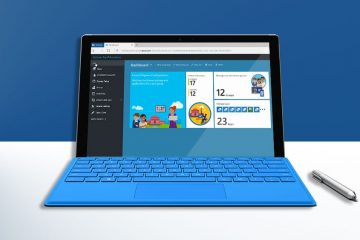5 Tips to Support Your 1:1 Program
We recently gave you 5 Tips for Implementing a 1:1 Program and wanted to follow it up with 5 Tips for Supporting a 1:1 Program. As we stated in the previous post, and as you are well aware, there is a lot more to a successful 1:1 program than purchasing and rolling out devices.

1. Continual Feedback
There are two things that everyone wants in life, voice and choice. One of the key ingredients to a successful 1:1 program is a process to collect, reflect on, and make decisions based on continual feedback. First, you have to decide whose voices you are collecting. Every school is made up of key stakeholders: students, parents, teachers, administrators, IT department, classified staff (1:1 programs affect them more than most people think), and community members.
Find a process that works for you and that allows people from each one of these areas to help shape and support your 1:1 program.
2. Device Repair
Schools can have the best teachers, the best professional development, dynamic lesson plans, and the greatest 1:1 device known to man. However, if that device is always broken, then the best teachers in the world can’t save the 1:1 program. You’ll never be able to stop devices from breaking. So, the question isn’t, “How can we stop devices from breaking?” The question to ask is, “How can we minimize the damages, and what do we do when they break?”
To minimize damages, you need to do two things: pick a sturdy device that helps you achieve your learning goals, and then add an extra level of protection through a shield and/or a case. Once you’ve picked the best device and added an appropriate level of protection, you plan for breakage.
Planning for breakage can be broken down (pun intended) into these questions:
- Who is going to do the repairs?
- What are the cost of repairs?
- Do we have Accidental Damage Protection?
- What does it cover?
- What are we going to do for students while their device is being repaired?
Now most of these questions can and should be answered before devices are rolled out to students, but they are also questions that need to be continually answered throughout the initiative.
3. Celebrate Early and Often
It doesn’t matter if you are rolling out a 1:1 for the first time or if this is your fifth refresh of your 1:1; there are always things to celebrate. Look for the teacher who is stepping out of his or her comfort zone and trying something new in the classroom. The class project that leverages the 1:1 device to bring in a global perspective into your local classroom. The principal who takes advantage of the new tools to collaborate with teachers, share information quickly, and reduce the number of meetings (making both teachers and administrators happy). Find those bright moments and highlight them in emails, social media posts, and even with a handwritten note. It’s usually easy to find something to complain about, but instead give them something to celebrate. The positive reinforcement will provide a spark to those early adopters and a gentle push to the late ones.
4. Look for Ways to Build Bridges to Other Initiatives
In schools we are often guilty of working in silos. Each initiative operates on its own timeline with its own goals. While it would make sense to see how these initiatives align, because of time and circumstances, this rarely happens. Take the time to see how your new 1:1 can support other initiatives around the district. One of the best ways is to look at the Open Educational Resources (OER) work being done by New America  . According to a recent large-scale study
. According to a recent large-scale study  , OER improve course grades and decrease DFW (D, F, and Withdrawal letter grades) rates for all students.
, OER improve course grades and decrease DFW (D, F, and Withdrawal letter grades) rates for all students.
When a school leverages the 1:1 program to empower teachers and students in how instruction and information is accessed, all while decreasing cost, then that’s a win for all of the key stakeholders. When you tell teachers and students they are going to have access to the latest and best information available and untether them from a textbook, tell parents/guardians you are going reduce the number of textbooks their students have to carry, tell the community leaders that you are preparing their students for the jobs that are coming, and top it off by telling the CFO that this will save the district money, then you’ve just got a lot of people on your side ready to help support your 1:1 program.
5. Provide Ongoing Professional Development
Wait, didn’t we cover this in the last post? Yes, but it’s just that important. There are usually so many questions, misconceptions, and fears that come along with a big initiative like a 1:1 rollout. Not to mention, with teacher turnover and the constant influx of new staff members, onboarding of new staff members is an area that is often overlooked. At RTI, we recognize the need to support the people who work closest with the students. Our top priority when working with schools is making sure that the learning environment is up and running and students and teachers can learn together. A robust professional development plan that supports all learners (students, teachers, administrators, IT staff, parents, etc.) is such an essential key to ensure a successful 1:1 program.
A 1:1 program is complex, but the experts at RTI are here to help! It doesn’t matter if you’re in the planning phase or right in the middle of implementation. We have experts to help you develop your plan to collect continual feedback, protect and repair your devices so students have them on a daily basis, enhance your social media use to celebrate the great things happening in your schools, develop and roll out an OER plan to empower students/teachers while reducing overall expenses, and provide continual professional development.
Date Posted: 7/17/18
Date Last Updated: 6/10/19
By: Brett Clark – RTI Technology Specialist
Brett Clark served in public education for 15 years as a classroom teacher, eLearning coach, and technology director. He has specialized in leveraging technology for student learning, implementing, evaluating, and innovating 1:1 initiatives, and instructional design. As a technology director in Southern Indiana, Brett rolled out a nationally recognized Chromebook initiative that put Chromebooks in the hands of over 8,000 students. His 1:1 was named a Promising Practice by the Indiana Department of Education.




